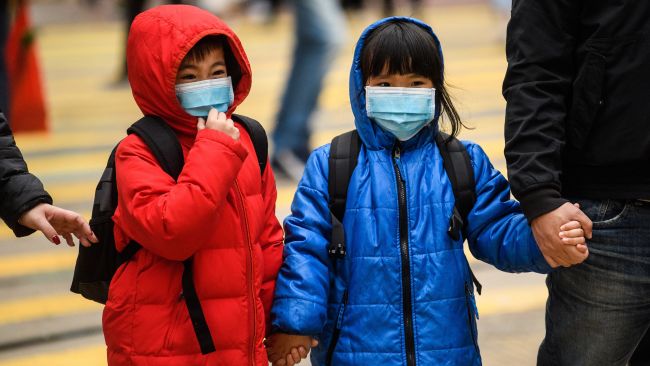
New York – Contrary to what governments and a school of scientists claim (including Tesla and SpaceX CEO Elon Musk), the number of children infected with the coronavirus is far more extensive than what is currently reported — a hidden detail that could vastly underestimate the demand on health care systems and pediatric intensive care units (PICUs).
A new study, published in the Journal of Public Health Management and Practice from the University of South Florida (USF) and the Women’s Institute for Independent Social Enquiry (WiiSE), estimated that for each child who requires intensive care for COVID-19, there are 2,381 children infected with the virus.
This calculation followed a report from the Chinese Center for Disease Control and Prevention regarding its clinical study of over 2,100 children in China with COVID-19.
“Although the risk of severe illness from COVID-19 is lower in pediatric cases than adults, hospitals should be prepared and have the proper equipment and staffing levels to deal with a potential influx of younger patients,” said author Jason Salemi, associate professor of epidemiology in the USF College of Public Health.
According to the North American registry, Virtual PICU Systems, 74 children in the US were admitted to PICUs between March 18 and April 6, signaling an additional 176,190 children were likely infected during this timeframe.
Children younger than 2 accounted for 30 per cent of the cases, 24 per cent were ages 2 to 11 and 46 per cent of the PICU cases were children between ages 12 and 17.
Researchers say that if as many as 25 per cent of the US population becomes infected with the coronavirus before the end of 2020, 50,000 children with severe illness will need to be hospitalized, with 5,400 of them critically ill and requiring mechanical ventilation.
Clinical reports indicate the average length of stay for pediatric COVID-19 is 14 days. According to a national survey, there are approximately 5,100 PICU beds in the US.
“Government officials and policy makers should understand the likelihood of capacity challenges, which underscores the importance of effective mitigation strategies such as frequent and thorough handwashing and persisted social distancing measures,” stressed Salemi.
Pediatric coronavirus is highly complex, as many hospitals are prohibiting visitors in order to implement social distancing and quarantine protocols.
A caretaker may also be infected, which would require logistical and infection control accommodations that place an additional strain on hospital resources.
Upon hospital discharge, young children may be unable to independently comply with home infection control and self-isolation recommendations.
Researchers pointed out the infection rate will be much higher for children in low-income families with parents in blue-collar and service jobs, which preclude the option of working from home.
There’s also an increased risk to children who live in urban public housing projects due to the close proximity of housing units and small communal recreation and commons area, the authors wrote.
The World Health Organisation (WHO) has warned some children develop ”severe” or ”critical” disease from coronavirus and parents need to prepare their kids to guard against COVID-19.
Musk had tweeted in March: “Kids are essentially immune, but elderly with existing conditions are vulnerable. Family gatherings with close contact between kids & grandparents probably most risky”.
Follow this link to join our WhatsApp group: Join Now
Be Part of Quality Journalism |
Quality journalism takes a lot of time, money and hard work to produce and despite all the hardships we still do it. Our reporters and editors are working overtime in Kashmir and beyond to cover what you care about, break big stories, and expose injustices that can change lives. Today more people are reading Kashmir Observer than ever, but only a handful are paying while advertising revenues are falling fast. |
| ACT NOW |
| MONTHLY | Rs 100 | |
| YEARLY | Rs 1000 | |
| LIFETIME | Rs 10000 | |













